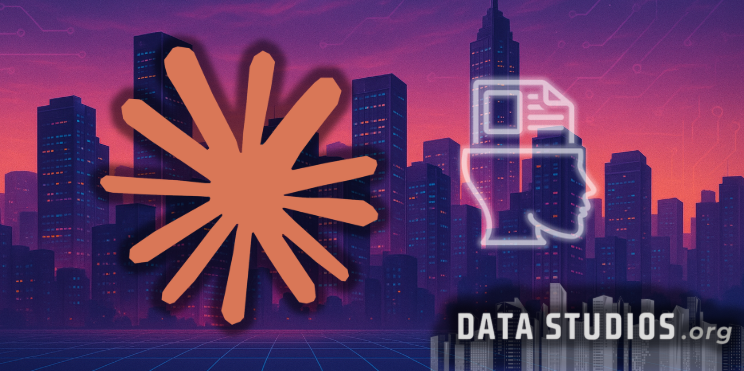How Microsoft Copilot Serves a Different Type of User Compared to Other AI Assistants
- Graziano Stefanelli
- Sep 20
- 4 min read

Microsoft Copilot has established itself as a powerful AI assistant, but its strengths lie in a very specific space: productivity, business workflows, and enterprise environments. Unlike general-purpose AI chatbots such as ChatGPT, Claude, Gemini, and Perplexity, which focus on creative writing, research, or reasoning, Copilot is built for users who live and work inside Microsoft 365 and want seamless assistance with their daily tasks.
This distinction makes Microsoft Copilot particularly valuable for professionals, project managers, data analysts, executives, and enterprise teams, while being less relevant for casual users who primarily need conversational or research-based assistance.
Built for Microsoft 365 power users
Microsoft Copilot is deeply integrated across the Microsoft 365 suite—Word, Excel, PowerPoint, Outlook, Teams, and OneNote—making it ideal for users who rely heavily on these tools in their workflow.
Word: Drafts reports, policies, and proposals based on user-provided prompts or connected company documents.
Excel: Analyzes data, builds pivot tables, applies formulas, and generates visual dashboards without requiring advanced spreadsheet skills.
PowerPoint: Converts briefs and documents into presentation-ready slides with structured layouts and AI-enhanced design suggestions.
Outlook: Summarizes long email threads, suggests replies, and automates meeting scheduling.
Teams: Generates real-time meeting notes, action items, and summaries while enabling fast decision tracking across departments.
This workflow-first approach is designed for users in business settings where productivity, automation, and integration matter more than creative experimentation.
A tool for enterprise professionals
While general-purpose chatbots appeal to individual users, Microsoft Copilot targets corporate environments where employees work with structured information across multiple apps and data sources. Typical use cases include:
Executives and managers: Creating polished presentations, reviewing team reports, and tracking key performance indicators.
Data analysts: Automating reporting pipelines, processing large spreadsheets, and identifying trends within enterprise datasets.
Project managers: Using Copilot in Teams to summarize project updates, generate timelines, and consolidate stakeholder decisions.
Knowledge workers: Drafting documents, preparing agendas, and pulling insights directly from Microsoft’s integrated data sources.
Because Copilot connects with enterprise permissions and integrates with Microsoft Graph, it has secure access to emails, files, calendars, and shared drives, delivering personalized context-aware outputs.
Deep integration with enterprise data
One of Copilot’s biggest strengths is its access to organization-wide data through Microsoft Graph. This sets it apart from other AI assistants:
It retrieves information from internal documents, spreadsheets, calendars, and meeting notes without requiring manual uploads.
Uses contextual insights from company data to tailor summaries, reports, and decision recommendations.
Respects organizational permissions, ensuring sensitive files are only accessible to authorized employees.
This makes Copilot especially powerful in large enterprises, where data lives across many Microsoft 365 applications and teams need AI-driven summaries and insights without switching platforms.
Focused on structured workflows rather than open-ended creativity
Unlike tools such as ChatGPT or Claude, which excel at brainstorming, storytelling, and conversational reasoning, Microsoft Copilot is optimized for structured task execution. Its strengths include:
Automating document generation, spreadsheet calculations, and presentation designs.
Assisting in data-heavy environments where repetitive reporting tasks dominate.
Summarizing content across interconnected applications and documents.
For users seeking deep research, long-context PDF analysis, or AI-driven creative writing, alternatives like Claude or ChatGPT may be more suitable. But for professionals looking to streamline productivity inside Microsoft’s ecosystem, Copilot offers unmatched efficiency.
Comparing Microsoft Copilot with other leading AI tools
Feature | Microsoft Copilot | ChatGPT | Claude | Gemini | Perplexity |
Primary focus | Productivity and automation | Creative generation + coding | Long-context document analysis | Google Workspace integration | Real-time search |
Best for | Enterprise professionals | General-purpose users | Researchers and analysts | Team collaboration | Fact-based quick research |
Integration | Deeply embedded in Microsoft 365 | Standalone web/app | API-driven integration | Native Workspace integration | Minimal integrations |
Data access | Microsoft Graph for company-wide data | File uploads + manual context | Multi-file workflows | Connected to Google Drive | Web-only results |
Collaboration | Optimized for Teams, Outlook, and shared enterprise workflows | Limited team-focused tools | Project-based insights in Claude Projects | Tight Workspace connectivity | Solo research |
Creativity | Limited | High | Moderate | High | Minimal |
Document handling | Excel + Word + PowerPoint workflows | PDFs, Docs, spreadsheets | Multi-file, long-context summaries | Google Docs, Sheets, Slides | Summarizes linked files only |
This comparison highlights how Microsoft Copilot is tailored to a specific user profile—knowledge workers, corporate teams, and enterprise environments—rather than casual or research-driven use cases.
Why certain users prefer Microsoft Copilot
Seamless integrationCopilot works natively within Microsoft 365, avoiding the friction of switching between external platforms.
Enterprise-grade productivityAutomates key workflows for professionals handling complex documents, presentations, and data reporting.
Secure contextual insightsLeverages Microsoft Graph to deliver tailored outputs based on company files and organizational data.
Collaboration-readyEmbedded into Teams and Outlook, Copilot supports real-time collaboration and smooth communication across departments.
Time efficiencyReduces repetitive manual work, enabling employees to focus on strategic decision-making rather than administrative tasks.
The bottom line
Microsoft Copilot is designed for business professionals and enterprise teams who spend their day inside Word, Excel, PowerPoint, Outlook, and Teams. While tools like ChatGPT, Claude, Gemini, and Perplexity shine in areas like creative writing, advanced research, and real-time information retrieval, Copilot is optimized for streamlining structured workflows, automating tasks, and leveraging organizational data.
For executives, analysts, project managers, and knowledge workers managing large volumes of company data, Microsoft Copilot provides personalized, context-aware assistance that other AI chatbots cannot match. Rather than competing to be the most creative assistant, Copilot focuses on being the most productive one.
____________
FOLLOW US FOR MORE.
DATA STUDIOS


